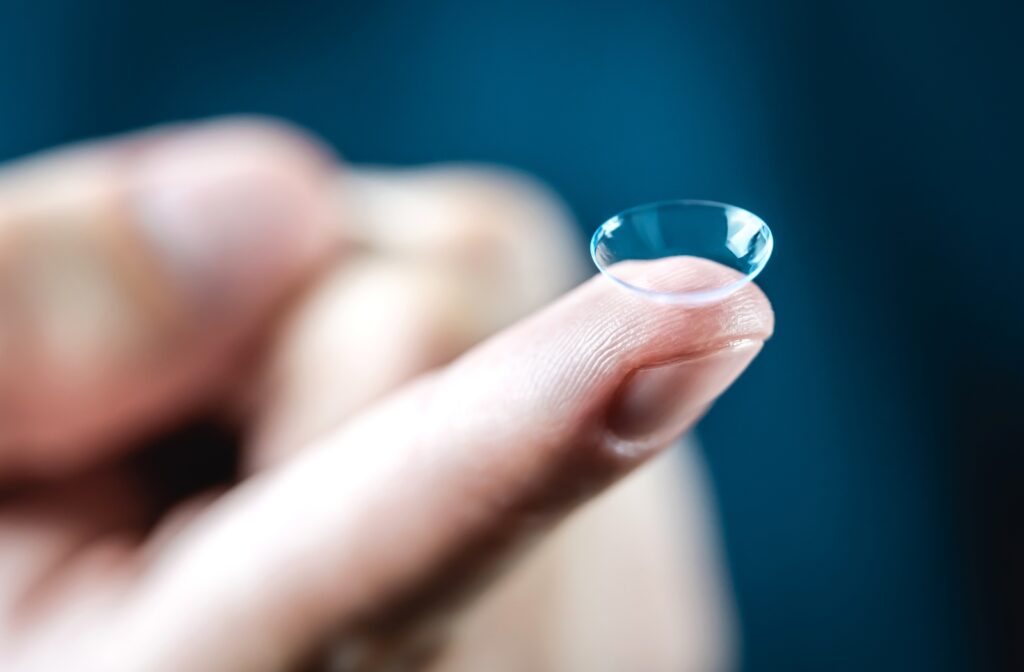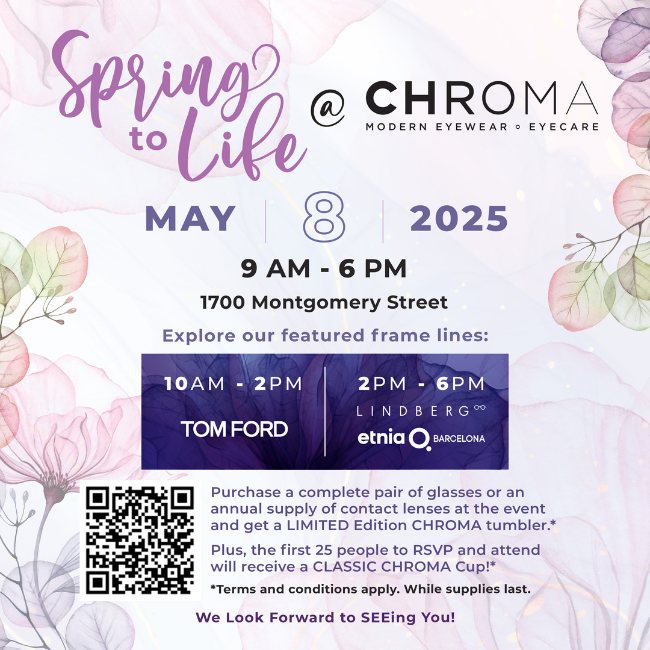Modern Contact Lenses
Lens technology has advanced for both eyeglasses and contacts. From coke-bottle lenses to ultra-thin lenses, contacts made of glass to soft plastics—modern lenses can do many impressive things for our vision and comfort.
Some of the most impressive developments have included contact lenses. Contacts were once only available for correcting a few prescriptions or couldn’t fit all eye shapes. Now, contacts are available for hard-to-fit eyes and can incorporate unique qualities.
One unique feature that once was only an option for eyeglass wearers is also available for contacts: bifocals.
What Are Bifocals?
Bifocal lenses are a type of multifocal lens. Like the root of the name suggests, multifocal means it improves focusing for multiple refractive errors. Most lenses have a single focus, correcting only one refractive error.
For example, a lens for myopia is designed to correct vision problems related to distance vision. On the other hand, a lens for presbyopia can only aid near-vision (commonly known as reading glasses).
A bifocal lens has 2 optical powers or prescriptions. For someone with myopia and presbyopia, their lens would include both prescriptions. The lens is split into sections. The top half of the lens has a different prescription from the bottom half. However, the top/bottom split is only one design type.
Are There Multifocal Contact Lenses?
When most people think of bifocals, they probably think of reading glasses. But bifocals and multifocals are available for contact lenses too!
Multifocal contact lenses are available in rigid gas permeable (hard) or soft contacts. Both lens materials can include distinct designs for bifocal prescriptions.
Bifocals for Refractive Errors
There are bifocal options for multiple types of refractive errors, such as:
- Presbyopia
- Astigmatism
- Myopia (nearsightedness)
- Hyperopia (farsightedness)
Bifocals can be helpful for astigmatism, as the irregular eye shape can often occur with other refractive errors.
Types of Bifocal Contacts
There are 2 main designs for bifocal contacts:
- Segmented
- Concentric
Segmented bifocals have 2 prescription or optical power sections (top and bottom). The segments incorporate a convenient design for an effortless switch between focuses or optical powers. The near vision segment is the lower half, and the upper half is distance vision.
For example, for a presbyopia/myopia split, the corrective lens is positioned for your natural reading position when you look down to read. Then, when you need to look up from your reading material, the lens is positioned for where your eyes naturally rest for distance vision.
Concentric bifocals use circular segmentation. A middle circle section corrects distance vision, while an outer ring corrects near vision.
Although differing from traditional sections, concentric bifocals similarly creates positions for the most convenient visual experience. However, in addition to the natural position of looking downward to read, you also have clearer vision for nearby peripheral objects.

Do You Need Bifocals?
The most common reason you might need a bifocal lens is aging. Our eyes change as we age, affecting our focusing ability. Adults over 40 develop presbyopia, an eye condition progressively impacting near vision over time.
Although the prescription or optical power may need adjusting as near vision worsens, bifocal lenses can make the transition easier. For adults in need of multiple prescriptions, it’s more convenient than switching between separate eyeglasses or contact lenses in between activities.
Another reason for needing bifocals is accommodative eye problems, which can occur in children. The eye muscles have difficulty compensating between different focuses (distance and near vision). Bifocal lenses support their naturally focusing efforts and can help correct the eye problem.
Bifocals can also reduce eye fatigue and other eye conditions in children, improving visual comfort.
Pros and Cons of Multifocal Contacts
Multifocal and bifocal contacts share many of the same pros and cons as traditional contact lenses, with a significant bonus.
Pros
Both traditional contacts and bifocals allow wearers freedom from eyeglasses.
With bifocal lenses, wearers can also skip the glasses as their eyes age. You don’t need to switch between contacts or contacts and glasses to see at multiple distances.
Bifocal contacts can also help with treating or managing some eye conditions, including as treatment for myopia in kids.
Cons
Bifocal contacts are not universally usable, just like traditional contact lenses. Certain eye conditions or high prescriptions can make finding a good lens match challenging. In some cases, the bifocal prescription may not be powerful enough for clear vision.
The segmentation may not seem obvious when your contact is sitting on your fingertip, but some wearers may also need more time to adjust to the new viewing experience.
Lastly, despite being one lens, multifocal contacts are more than one prescription. The cost can be higher as precise measurements and prescription requirements need to be met.
It’s important to discuss your vision and your options with your optometrist to learn if bifocal contacts can help you.
Lenses Fit for Your Vision
Your vision needs are unique, and single prescription lenses may not be the right fit. If you’re experiencing vision changes or visual discomfort, it might be time to reassess your prescription. After an eye exam, we can discuss bifocals or other options to improve your visual experience. Contact our office to request an appointment with CHROMA modern Eyewear Eyecare.



